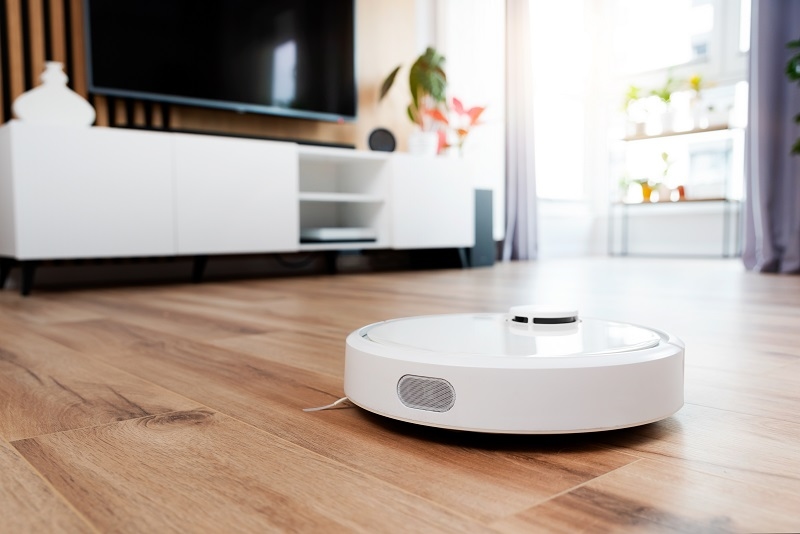
Robot vacuums are brilliant time savers - they can help homeowners stay on top of dirt and debris without breaking a sweat. To keep your robot cleaner functioning like a champ, however, you'll need to clean the robot vacuum regularly and employ a few important maintenance techniques. Whether you have a Roomba or another company's model, maintenance extends its lifespan, avoids mechanical breakdowns, and maintains maximum suction power.
Here is this ultimate guide where we'll take you through it all—you want to know how to properly clean robot vacuum units, robot vacuum brushes, deep clean Roomba parts, replace vacuum filters, and even provide some smart robot vacuum storage tips and prevention of odor in dusty spaces. We'll get your robot vacuum back in action like it was brand new again!
Your magic robot vacuum may be a wonder, but magic itself has its limitations. Hair gets tangled around brushes, fine dust clogs filters, and wheels can become wedged with dirt. Daily cleaning is a must if you want to maintain performance and keep repair costs down.
Here are some benefits of cleaning and maintaining regularly:
Cleaning your robot vacuum isn't just about keeping it looking shiny—it's also about longevity, sanitation, and performance.
Have the following supplies ready before getting started:
These simple tools will allow you to clean robot vacuum parts effectively and safely.
Your robot vacuum's initial defense against household dust lies in the dustbin.
Cleaning Instructions:
Hair, strings, and trash can easily wrap around brush rollers, reducing cleaning effectiveness.
Repeat at least weekly or following each set of heavy-duty cleaning sessions. Brush maintenance on robot vacs enhances performance and minimizes motor wear.
Even the most high-tech robot vacuums sometimes require deep cleaning. To deep clean Roomba parts (and other brand units):
For routine use, deep clean every 2-4 weeks, depending on usage and environment. This is critical in homes with pets or other dusty environments.
Filters all help to trap fine debris and keep your indoor air quality healthy. Weak suction and performance may be caused by clogged or dirty filters.
Don't forget to clean the outside of your robot vacuum! It is important to clean the outside of your robot vacuum in order to ensure not only sensor performance, but zero transfer of dirt to directly affect cleaning performance on the floor.

Storing your robot vacuum correctly extends its battery life and reduces mechanical stress.
Following good robot vacuum storage guidelines keeps your device in prime condition between uses.
Having a maintenance routine can avoid disruptions and achieve the longest lifespan for your robot vacuum.
Task Frequency
Utilize your phone calendar or robot vacuum app reminders to keep track!
Dusty floors and pet dander cause stinky odors. Here's the secret to keeping your robot vacuum smelling sweet:
Considering that dust prevention in dusty homes starts with regular upkeep and proper care of the filters.
Even with careful routine maintenance, robot vacuums experience stalling at times. Below are the most common issues and how to fix them:
Solution: Empty the dustbin, clean or replace the vacuum filter, and inspect the brush rollers for blockages.
Solution: Make sure that brushes are not knotted, there are no jams in the wheels, and the sensors are not dirty.
Solution: Deep clean all Roomba components, especially wheels and brushes.
Regularly troubleshooting can conserve your precious time and money—and help you prevent more costly mechanical failure!.
Being green doesn't have to be difficult when it comes to caring for your robot vacuum.
By properly caring for your device, you're also taking care of the earth.
A robot vacuum is a great investment—provided you keep it in good condition. Now that you understand the process through the steps mentioned above, you are capable of cleaning robot vacuum machines effectively and properly, keeping robot vacuum brushes in good condition, deep cleaning Roomba components, vacuum filter replacement on time, and utilizing robot vacuum storage tips that save your investment.
Regardless of whether you're looking for cleaner air, smoother operation, or simply a longer life for your device, maintenance is worth it. Make it part of your home routine, and your robot vacuum will reward you for years to come.
Q1. How often should I vacuum my robot?
A: Ideally after each use, particularly the dustbin. Brushes and filters weekly, complete deep clean 2–4 weeks.
Q2. Is water suitable for cleaning Roomba components?
A: Simply the washable components may be cleaned with water. Be sure to read your vacuum's user guide.
Q3. How long do filters for robot vacuums last?
A: Generally 1–2 months depending on usage and dust density. Replace on a regular basis for optimum performance.
Q4. My robot vacuum has an unpleasant odor—what do I do?
A: Replace or clean the filter, wash the dustbin, and place a drop of essential oil to facilitate odor prevention where there is dust.
This content was created by AI